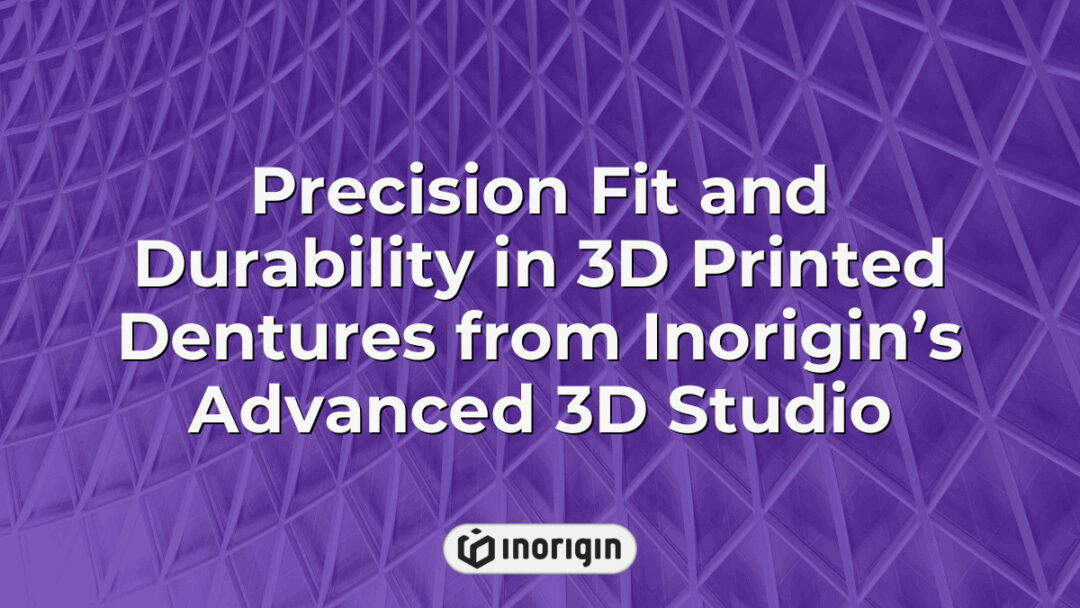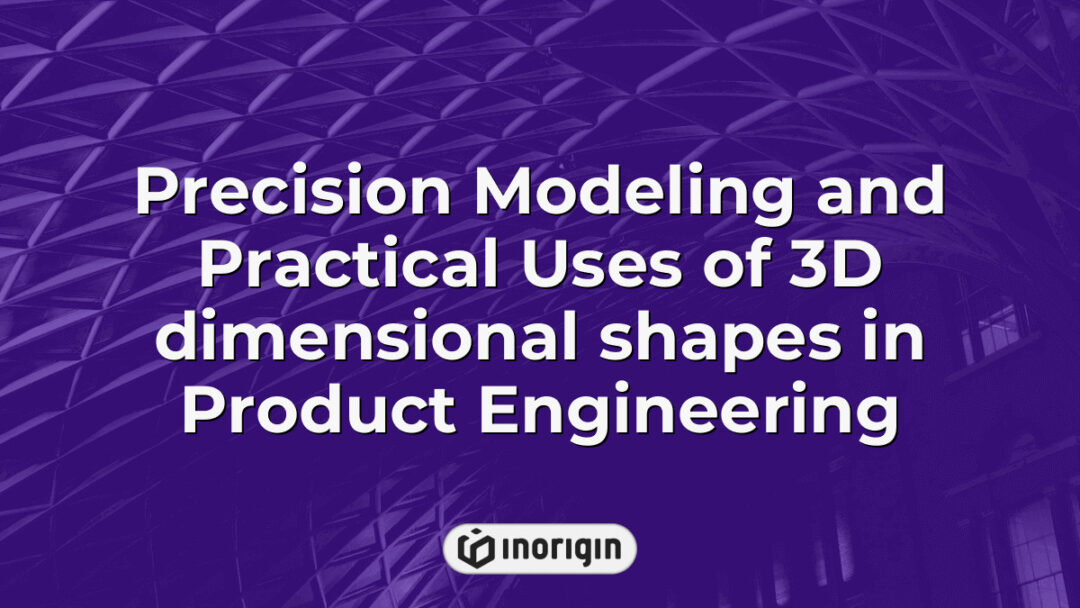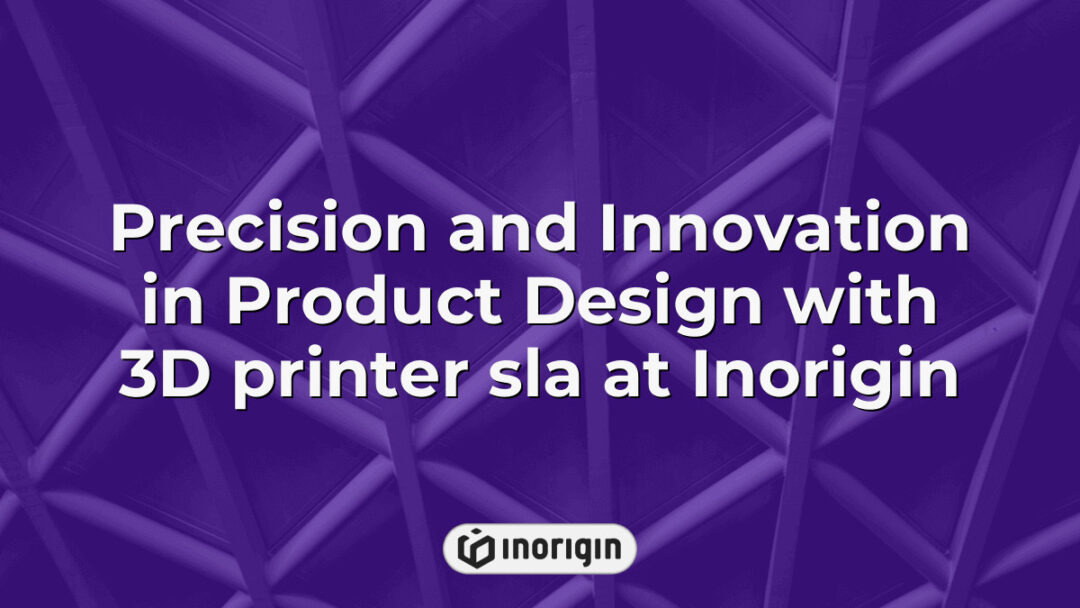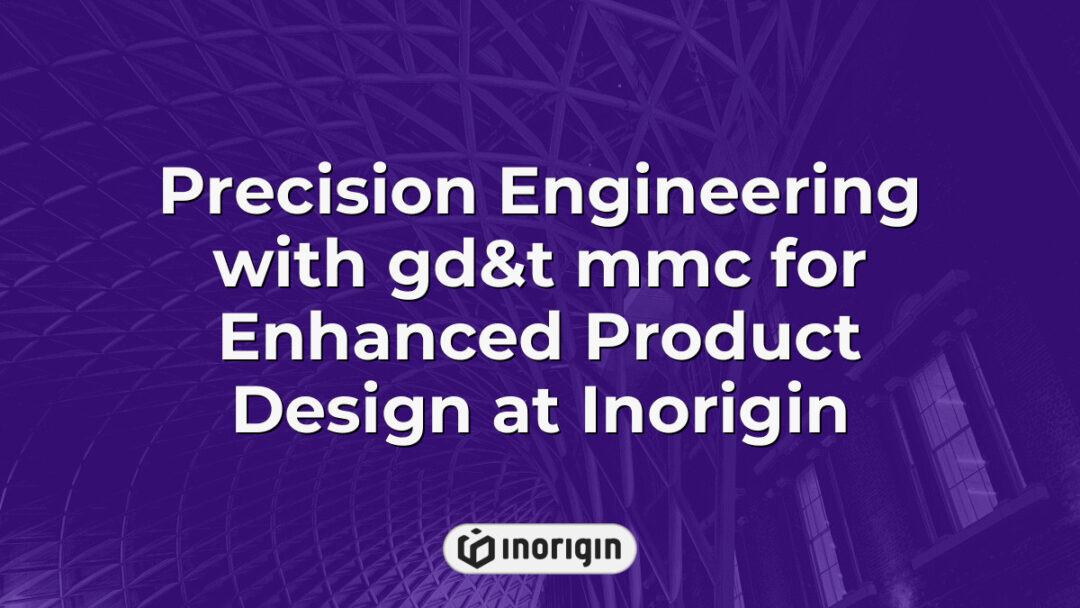The advent of 3D printing technology has revolutionized numerous fields, and dentistry stands at the forefront of this transformative wave, particularly through the development of 3D printed dentures. As traditional denture fabrication methods often involve labor-intensive processes that can lead to long wait times and suboptimal fit, 3D printing offers a groundbreaking solution characterized by unprecedented precision and customization. This innovative approach not only enhances patient comfort but also significantly streamlines production timelines, allowing for on-demand manufacturing tailored to individual anatomical needs. Furthermore, the incorporation of advanced materials in conjunction with digital design techniques heralds a new era in prosthodontics, promising enhanced durability and aesthetic appeal while simultaneously reducing costs. An exploration into 3D printed dentures illuminates the intersection of technology and healthcare, underscoring the potential for improved outcomes within dental practices worldwide.
| Αποψη | Key Takeaway |
|---|---|
| Technology Impact | 3D printed dentures revolutionize prosthodontics by providing precise, customizable solutions that streamline traditional fabrication challenges. |
| Προσαρμογή | Digital design and 3D printing enable individualized denture fits tailored to each patient’s unique oral anatomy for enhanced comfort and functionality. |
| Υλικά | Advanced biocompatible resins ensure durability, aesthetic appeal, and patient comfort while meeting stringent health and safety standards. |
| Αποτελεσματικότητα Παραγωγής | On-demand additive manufacturing significantly reduces production times, allowing dental practices to deliver faster turnaround without compromising quality. |
| Patient Benefits | Precise digital workflows minimize fitting adjustments, improving overall satisfaction by providing comfortable, well-fitting dentures. |
| Comparison with Traditional Methods | 3D printed dentures outperform conventional techniques in accuracy, production speed, and consistent quality, enhancing patient outcomes. |
| Μελλοντικές Τάσεις | Integration of sophisticated software and innovative materials promises continued advancement in personalized, durable, and aesthetically pleasing dentures. |
Advancements In Dental 3D Printing Technology
The revolution in dental care heralded by advancements in 3D printing technology promises to redefine the landscape of prosthodontics, transforming the creation of digital dentures from a laborious and time-consuming process into an astonishingly efficient procedure characterized by unprecedented dimensional accuracy. Initially overlooked as merely a novel technique, 3D printing now stands at the forefront of dental innovation, significantly enhancing patient outcomes while simultaneously reducing costs for practitioners. Moreover, this cutting-edge approach allows for customized fits that were previously unimaginable; traditional methods often constrained dentists within the limits of manual fabrication techniques, whereas contemporary 3D systems enable rapid prototyping and modification tailored to individual anatomical features. Thus, with each advancement in material science and printer capabilities, practitioners achieve greater precision and speed—a dual triumph in clinical efficacy and operational efficiency. These developments not only echo across laboratories but also resonate profoundly within patients’ experiences, underscoring a shift towards personalized healthcare solutions as digital dentures gain traction among industry professionals seeking optimum results.
The Process Of Creating 3D Printed Dentures
The process of creating 3D printed dentures involves several critical steps that ensure the production of high-quality prosthetics tailored to individual patient needs. Initially, a digitized patient model is captured through advanced imaging techniques such as intraoral scanning or cone beam computed tomography (CBCT). This digital representation provides a highly accurate blueprint for the design and subsequent fabrication of dentures. Following this, specialized software is employed to customize the denture design, focusing on achieving an optimal fit based on the unique anatomical features of each patient’s oral cavity. Subsequently, the finalized design undergoes conversion into a format suitable for additive manufacturing, whereby layers of biocompatible materials are sequentially deposited to construct the denture. The integration of d printing technology in dentistry not only enhances precision but also facilitates efficient production timelines compared to traditional methods, ultimately leading to improved patient outcomes in terms of comfort and functionality.
Materials Used In 3D Printed Dentures
The selection of materials in the fabrication of 3D printed dentures is a critical consideration that directly impacts not only the functionality but also the longevity and aesthetic appeal of the final product. What types of materials are optimal for ensuring both durability and comfort in dental applications? A prominent choice in this domain includes photopolymer resins, which can be employed to create strong yet lightweight denture bases. For example, Lucitone Digital Print Denture resin has gained recognition for its excellent mechanical properties and seamless integration with existing digital workflows, making it an ideal candidate for modern 3D printing technologies. Additionally, advancements in biocompatible materials have led to enhanced patient comfort and reduced allergic reactions, further broadening material options available to practitioners. Therefore, as dentistry continues to evolve through innovations such as 3D printing, understanding these material compositions becomes essential for achieving optimal results.
TIP: When selecting materials for 3D printed dentures, consider not only the aesthetic qualities but also factors such as adaptability to different patients’ oral environments and compliance with health regulations to ensure long-lasting and safe solutions.
Comparing Traditional Dentures To 3D Printed Ones
Comparing traditional dentures to 3D printed ones reveals significant differences in both the denture production workflow and overall patient outcomes. Traditional dentures have long been produced through a labor-intensive process that involves several manual steps, such as taking impressions, wax modeling, and laboratory fabrication. This conventional method often results in longer turnaround times for patients and can lead to variability in fit and comfort due to human error. Conversely, the advent of 3D printing technology has revolutionized the field of prosthodontics by enabling more precise and efficient denture creation. The digital nature of 3D printing dentures allows for rapid prototyping and customization based on individual patient anatomy, thereby enhancing accuracy and predictability in the final product. Moreover, 3D printed dentures exhibit improved material properties, which contribute to patient satisfaction regarding comfort and aesthetics. Consequently, while traditional methods may still be prevalent in some practices, the shift towards additive manufacturing represents a pivotal advancement in dental care.
To optimize the benefits associated with 3D printed dentures, it is advisable for practitioners to invest in comprehensive training programs that familiarize them with digital workflows and advanced printing technologies. Such initiatives will ultimately empower professionals to deliver enhanced service quality resulting from increased efficiency and precision throughout the denture production workflow.
Future Trends In Denture 3D Printing
As the digital era unfolds, the landscape of dental prosthetics undergoes a fundamental transformation, akin to the emergence of a new dawn illuminating previously shadowed practices. The evolution of 3D printed dentures exemplifies this shift, as advancements in additive manufacturing technologies enable precision and customization that traditional methods struggle to achieve. Current trends highlight increased integration of sophisticated software that allows for virtual fittings and simulations, ensuring an unprecedented level of accuracy tailored to individual patient needs. Furthermore, developments in biocompatible materials are expanding options for durability and aesthetic appeal in d printed dentures, enhancing both functionality and patient satisfaction. This amalgamation of technological breakthroughs not only streamlines production processes but also reduces waiting times significantly, creating more accessible pathways for patients seeking quality dental solutions. As these innovations proliferate within clinical practice, they signal a profound change in how denture fabrication is approached—marking a pivotal moment where tradition yields to efficiency without compromising care quality.
Συχνές Ερωτήσεις
Ποια είναι τα κύρια πλεονεκτήματα της χρήσης τρισδιάστατων εκτυπωμένων οδοντοστοιχιών έναντι των παραδοσιακών;
Η έλευση της τεχνολογίας τρισδιάστατης εκτύπωσης στην οδοντιατρική προαναγγέλλει μια μεταμορφωτική εποχή, όπου η προοπτική της κατασκευής οδοντοστοιχιών με πρωτοφανή ακρίβεια και αποτελεσματικότητα δεν είναι πλέον απλώς μια φιλοδοξία, αλλά μια απτή πραγματικότητα. Τα κύρια πλεονεκτήματα της χρήσης τρισδιάστατων εκτυπωμένων οδοντοστοιχιών έναντι των παραδοσιακών μεθόδων έγκεινται στις ανώτερες δυνατότητες προσαρμογής τους, στους επιταχυνόμενους χρόνους παραγωγής και στη βελτιωμένη άνεση του ασθενούς. Πρώτον, η τρισδιάστατη εκτύπωση διευκολύνει την απαράμιλλη εξατομίκευση, επιτρέποντας στους οδοντιάτρους να δημιουργούν μοντέλα που αντικατοπτρίζουν με ακρίβεια τα μοναδικά ανατομικά χαρακτηριστικά της στοματικής κοιλότητας κάθε ασθενούς. αυτό το επίπεδο λεπτομέρειας είναι συχνά ανέφικτο με τις συμβατικές τεχνικές. Επιπλέον, η ταχύτητα με την οποία μπορούν να παραχθούν αυτές οι οδοντοστοιχίες ξεπερνά σημαντικά τις παραδοσιακές μεθόδους κατασκευής, μειώνοντας τον χρόνο αναμονής για τους ασθενείς ενώ παράλληλα αυξάνοντας την αποτελεσματικότητα των υπηρεσιών για οδοντιατρεία. Επιπλέον, οι εξελίξεις στα υλικά που χρησιμοποιούνται στην τρισδιάστατη εκτύπωση οδήγησαν στην ανάπτυξη ελαφρύτερων αλλά ανθεκτικών βάσεων οδοντοστοιχιών που προσαρμόζονται πιο φυσικά στη γραμμή των ούλων, εξαλείφοντας έτσι την ενόχληση που σχετίζεται με την κακή εφαρμογή προσθετικών που συνήθως συνδέονται με παλαιότερες προσεγγίσεις. Συνολικά, αυτοί οι παράγοντες δείχνουν συλλογικά πώς οι τρισδιάστατες εκτυπωμένες οδοντοστοιχίες όχι μόνο ενισχύουν τα κλινικά αποτελέσματα αλλά εμπλουτίζουν επίσης τις εμπειρίες των ασθενών μέσω της βελτιωμένης εφαρμογής και λειτουργίας.
Πόσος χρόνος χρειάζεται συνήθως για να λάβετε ένα ζευγάρι οδοντοστοιχίες με τρισδιάστατη εκτύπωση;
Η διαδικασία απόκτησης ενός ζεύγους τρισδιάστατων εκτυπωμένων οδοντοστοιχιών περιλαμβάνει πολλά στάδια, που χαρακτηρίζονται συνήθως από ένα χρονοδιάγραμμα που είναι συχνά μικρότερο από τις παραδοσιακές μεθόδους κατασκευής οδοντοστοιχιών. Αρχικά, οι ασθενείς υποβάλλονται σε μια ολοκληρωμένη συνεδρία διαβούλευσης και απεικόνισης για τη δημιουργία λεπτομερών μοντέλων των στοματικών τους δομών, η οποία μπορεί να διαρκέσει περίπου ένα έως δύο ραντεβού που εκτείνονται την εβδομάδα περίπου. Στη συνέχεια, αυτές οι ψηφιακές αποτυπώσεις διευκολύνουν τη φάση ταχείας δημιουργίας πρωτοτύπων που ενεργοποιείται από την προηγμένη τεχνολογία 3D εκτύπωσης. Κατά τη διάρκεια αυτού του σταδίου, ενδέχεται να προκύψουν τροποποιήσεις σχεδιασμού με βάση την ανατροφοδότηση και τις κλινικές απαιτήσεις του ασθενούς. Μετά την ολοκλήρωση της φάσης εκτύπωσης, η οποία γενικά απαιτεί από μερικές ώρες έως αρκετές ημέρες ανάλογα με την πολυπλοκότητα και τα υλικά που χρησιμοποιούνται, τα βήματα μετά την επεξεργασία, όπως η διασφάλιση ποιότητας και η στίλβωση, πραγματοποιούνται πριν από την τελική τοποθέτηση. Τελικά, τα περισσότερα άτομα μπορούν να αναμένουν ότι θα λάβουν ολοκληρωμένες τρισδιάστατες εκτυπωμένες οδοντοστοιχίες εντός χρονικού πλαισίου που κυμαίνεται από δύο εβδομάδες έως ένα μήνα μετά τις αρχικές διαβουλεύσεις - μειώνοντας σημαντικά τις καθυστερήσεις που σχετίζονται με τις συμβατικές διαδικασίες προετοιμασίας της οδοντοστοιχίας, ενώ παράλληλα προσφέρουν βελτιωμένη εξατομίκευση μέσω τεχνικών ακριβείας κατασκευής.
Are 3D Printed Dentures Customizable To Individual Patients’ Needs?
Οι τρισδιάστατες εκτυπωμένες οδοντοστοιχίες προσφέρουν υψηλό βαθμό προσαρμογής προσαρμοσμένες στις μοναδικές ανατομικές και αισθητικές απαιτήσεις των μεμονωμένων ασθενών. Πρώτον, οι εξελίξεις στην τεχνολογία ψηφιακής σάρωσης επιτρέπουν την ακριβή χαρτογράφηση των στοματικών δομών, επιτρέποντας ακριβή αντίγραφα που αντικατοπτρίζουν το συγκεκριμένο μέγεθος, σχήμα και ευθυγράμμιση του στόματος του ασθενούς. Στη συνέχεια, τα προγράμματα λογισμικού που έχουν σχεδιαστεί για οδοντιατρικές εφαρμογές διευκολύνουν εξατομικευμένες προσαρμογές με βάση τις προδιαγραφές των κλινικών ιατρών σχετικά με την απόφραξη και την εφαρμογή. Επιπλέον, διάφορα υλικά που χρησιμοποιούνται στην τρισδιάστατη εκτύπωση —συμπεριλαμβανομένων βιοσυμβατών ρητινών— μπορούν να επιλεγούν σύμφωνα με τις προτιμήσεις ή τις εκτιμήσεις ευαισθησίας των ασθενών. Ως αποτέλεσμα, όχι μόνο αντιμετωπίζεται η λειτουργική πτυχή μέσω σχολαστικών διαδικασιών σχεδιασμού, αλλά και καλλυντικά στοιχεία όπως η αντιστοίχιση χρωμάτων μπορούν να προσαρμοστούν για να βελτιώσουν τη συνολική εμφάνιση των προσθετικών συσκευών. Η διαδραστική φύση αυτής της καινοτόμου προσέγγισης συμβάλλει σημαντικά στη βελτιωμένη ικανοποίηση των ασθενών διασφαλίζοντας μια πιο άνετη και αισθητικά ευχάριστη λύση στις ανάγκες αντικατάστασης δοντιών.
Ποια είναι η αναμενόμενη διάρκεια ζωής των τρισδιάστατων εκτυπωμένων οδοντοστοιχιών σε σύγκριση με τις παραδοσιακές οδοντοστοιχίες;
The expected lifespan of 3D printed dentures compared to traditional dentures presents a compelling area of inquiry within dental practices. Research indicates that while traditional acrylic dentures can last approximately five to ten years, advances in 3D printing technology are progressively enhancing the durability and longevity of custom denture solutions. Notably, studies suggest that certain materials utilized in 3D printed dentures may extend their functional lifespan up to fifteen years under optimal conditions.
Key factors influencing the lifespan of both types of dentures include:
- Material Composition: The choice between different resin formulations affects not only aesthetics but also wear resistance over time.
- Patient Care Practices: Regular maintenance routines such as cleaning protocols directly impact the deterioration rates for both 3D printed and traditional options.
- Wear Patterns: Individual masticatory habits can lead to varying levels of stress on denture structures, thereby contributing to differences in longevity.
As technological advancements continue to improve material properties and manufacturing processes, it is anticipated that the disparity in lifespan between 3D printed and traditional dentures will decrease. Meanwhile, continued emphasis on patient education regarding care practices remains essential for maximizing the usability period of any denture type.
Υπάρχουν κίνδυνοι ή μειονεκτήματα που σχετίζονται με τις τρισδιάστατες εκτυπωμένες οδοντοστοιχίες;
The utilization of 3D printed dentures, while advancing the field of dental prosthetics, does present several risks and downsides that warrant consideration. Firstly, the materials employed in 3D printing may not always replicate the biocompatibility and durability characteristic of traditional denture materials. Issues such as insufficient mechanical strength can arise, potentially leading to fractures during functional use. Furthermore, there exists a risk regarding the precision of fit; inadequate adjustments might be necessary due to variations in printing techniques or material shrinkage during polymerization. Additionally, patients may experience delayed assessment concerning optimal aesthetics since customization often involves iterative design processes unique to each individual’s requirements. Moreover, issues related to regulatory standards for medical devices can emerge due to the rapid evolution of additive manufacturing technologies.
- Variability in material properties compared to conventional methods.
- Potential challenges with fitting accuracy and adjustment post-manufacturing.
- Increased reliance on digital technology may lead to technical malfunctions.
- Regulatory guidelines for quality control are still evolving for 3D printed products.
- Long-term clinical outcomes remain less documented than those associated with established denture practices.
Understanding these factors is crucial for practitioners when considering the integration of 3D printed dentures into patient treatment plans. The ongoing research efforts aimed at addressing these concerns will likely dictate future advancements in this area, ensuring that any inherent limitations can be effectively mitigated through innovation and refinement in technology and methodology.
Σύναψη
In the rapidly evolving realm of dentistry, 3D printed dentures emerge as the shining knights in plastic armor, gallantly replacing their archaic counterparts. As traditional manufacturers grapple with sticky gums and outdated molds, the seamless precision and customization offered by this innovative technology promise a future where ill-fitting chompers become mere relics from a bygone era.
Σχετικές αναρτήσεις:
- Precision Engineering and Material Innovation in Dental 3D Printer Technology
- Ακρίβεια και καινοτομία στη μηχανική ιατρικών προϊόντων για λύσεις υγειονομικής περίθαλψης επόμενης γενιάς
- Προϊόντα βιοϊατρικής μηχανικής που οδηγούν σε καινοτομίες στην προσθετική και τις αναγεννητικές θεραπείες
- The Impact of 3D Printed Plaster Cast on Personalized Orthopedic Treatment
- Τα τρισδιάστατα εκτυπωμένα όργανα αναδιαμορφώνουν την επιτυχία της μεταμόσχευσης μέσω εξατομικευμένων καινοτομιών βιοεκτύπωσης
- Επαναστατική ανάκαμψη με τρισδιάστατο εκτυπωμένο καστ προσαρμοσμένο για ακρίβεια και άνεση




